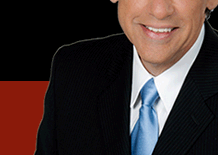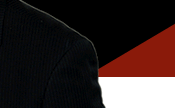|
On Collaboration
There was a piece on CNN last week about a show of 20th Century
furniture which is currently on display at the Museum of Modern
Art in New York. What caught my eye was the furniture designed
for work. The designers apparently had in mind that the exchange
of ideas would be enhanced by furniture which could move with
the worker, or could be easily wired for computer telecommunications.There
is logic to this.
The designs, however, fell into the arena of the odd: one
movable 'pod', whose seating comes from a John Deere tractor,
has a colorful semi-circular skirt of plastic behind it where,
I guess, I'm supposed to somehow attach my 'ideas'. Another
was a 'thinking booth' of some sort which looked suspiciously
like the flight simulators we saw when NASA was about to launch
another moon mission. With ductwork and cables streaming from
the back of it-or was it the front?- only the space agency's
logo was missing from the shot.
Now to be fair, I'm not a furniture designer, I'm a graphic
designer, and I appreciate that people are trying to 'think
outside the box'. But I don't think we need different furniture
to enhance the process of collaboration. What we do need is
the proximity, the time, and the will with which to do it.
This is the thing which is curious: in most of the news organizations
that I've worked for, the graphics and the editorial sides
of the operation are completely separate- they are often on
different floors, sometimes in different buildings. In the
broad strokes, this is OK: the editorial folks order the graphics,
the designers produce the graphics, the graphics get on television,
end of story. True enough. But what I've described is a one
way street.
Graphics have become an increasingly vital part of broadcasts.
(Have you watched NBC Nightly News lately)? Most local newsrooms,
however, seem not to want to work with graphic designers to
help editorially. Why? There are many reasons, some justified
and others useless. First there is the perception that we
have nothing to contribute; we are simply not interested enough
in the news. Not so; most of the people I know who do news
graphics are as amazed by the dance of daily events as journalists
are. Many of us have been doing this for a long time, and
have observed what does and does work in storytelling using
graphics. And, too, there's the habit we have developed of
doing everything on a 'crash' basis: how often have I contributed
graphics to even HFRs at the last minute... High story counts
are also the enemy of graphic explanation: I know perfectly
well that, if you've been given 1:10 in which to tell a story,
chances are it will not include anything more visually complicated
than cg over a background- if that.
I do sympathize. All of these things, as well as the many
others I haven't mentioned, represent entrenched ways of thinking
and working which reinforce the sameness of our product. My
experience shows that its' the EP who either does or does
not have an awareness of the role of graphics in a broadcast.
(One of the EPs I worked for made his broadcast with virtually
no graphics- no OTSs', few full screens. It didn't last).
The EP pushes reporters and producers to think graphically,
order graphics and then follow through on their production
and use. A good News Director makes sure that there is a lead
artist attending every editorial meeting. (Don't worry- we
won't leak the sweeps stories. How insulting is that)?
We should be part of planning: say your health producer is
going do a series two months from now on advances in heart
surgery. Why doesn't the producer sit with the art director
now, over coffee perhaps, to find out whether or not there's
someone in the shop who can do cutaway illustrations of the
procedure? Or a 3D animation? Magazines do this. Newspapers
do this. Book publishers do this. Ad agencies do this. But
TV newsrooms, by and large, don't.
These are old habits which are dying hard, and they do not
serve us. Boatloads of viewers are turning away from what
we offer them because they perceive correctly- the safe haven
of sameness to which we have anchored ourselves. Although
it does take time to do some things (don't expect that 3D
heart surgery animation to be done in an hour), we can't hide
behind 'it's too difficult', or 'it's too expensive' much
longer. For one thing, it isn't: the graphics system you needed
5 years ago to do that animation cost 20 grand then. Now it
costs 2 grand- software and hardware included. (Not a capital
expenditure)! And the people with the skill are there, ready,
willing and able to help you with your vision. Find us and
work with us. Special furnishings are not required.
About the Author
Nancy LeMay is a five-time Emmy winning broadcast designer
who has worked both in New York and LA, in network and local.
She is a teacher and a painter as well. You can reach her
through her website, www.Nancylemay.com
and by email at NancyLeMayCo@aol.com
|

















